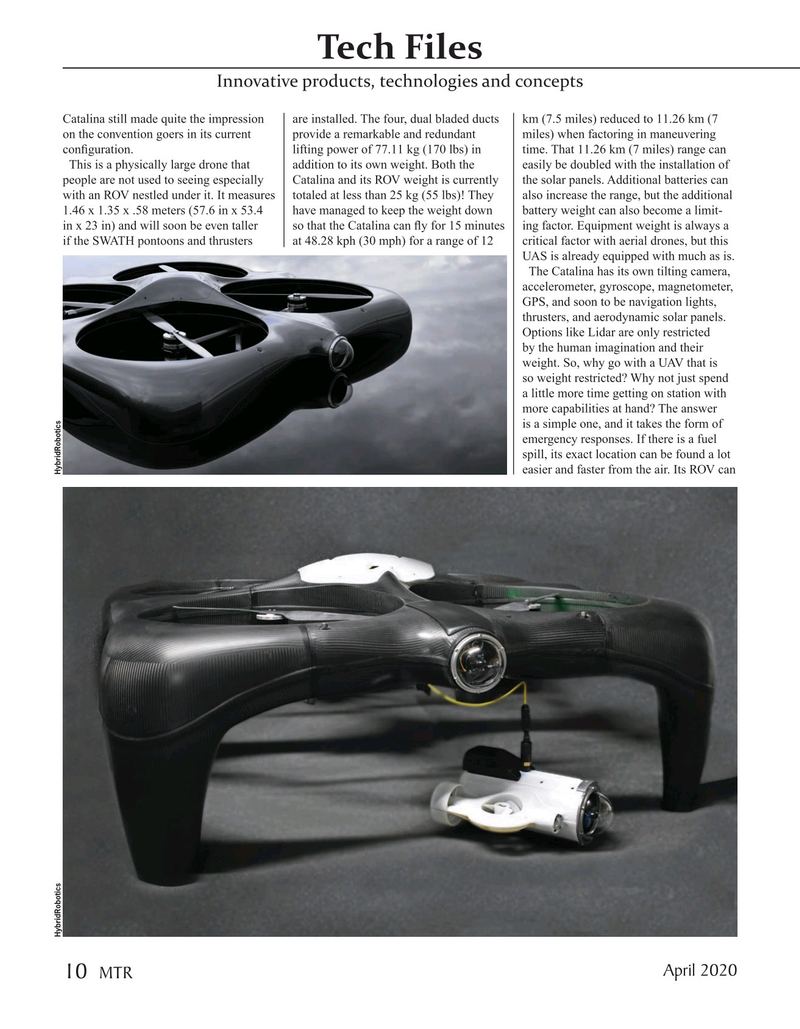
Page 10: of Marine Technology Magazine (April 2020)
Read this page in Pdf, Flash or Html5 edition of April 2020 Marine Technology Magazine
Tech Files
Innovative products, technologies and concepts
Catalina still made quite the impression are installed. The four, dual bladed ducts km (7.5 miles) reduced to 11.26 km (7 on the convention goers in its current provide a remarkable and redundant miles) when factoring in maneuvering confguration. lifting power of 77.11 kg (170 lbs) in time. That 11.26 km (7 miles) range can
This is a physically large drone that addition to its own weight. Both the easily be doubled with the installation of people are not used to seeing especially Catalina and its ROV weight is currently the solar panels. Additional batteries can with an ROV nestled under it. It measures totaled at less than 25 kg (55 lbs)! They also increase the range, but the additional 1.46 x 1.35 x .58 meters (57.6 in x 53.4 have managed to keep the weight down battery weight can also become a limit- in x 23 in) and will soon be even taller so that the Catalina can fy for 15 minutes ing factor. Equipment weight is always a if the SWATH pontoons and thrusters at 48.28 kph (30 mph) for a range of 12 critical factor with aerial drones, but this
UAS is already equipped with much as is.
The Catalina has its own tilting camera, accelerometer, gyroscope, magnetometer,
GPS, and soon to be navigation lights, thrusters, and aerodynamic solar panels.
Options like Lidar are only restricted by the human imagination and their weight. So, why go with a UAV that is so weight restricted? Why not just spend a little more time getting on station with more capabilities at hand? The answer is a simple one, and it takes the form of emergency responses. If there is a fuel spill, its exact location can be found a lot easier and faster from the air. Its ROV can
HybridRobotics HybridRobotics April 2020 10
MTR

 9
9

 11
11
